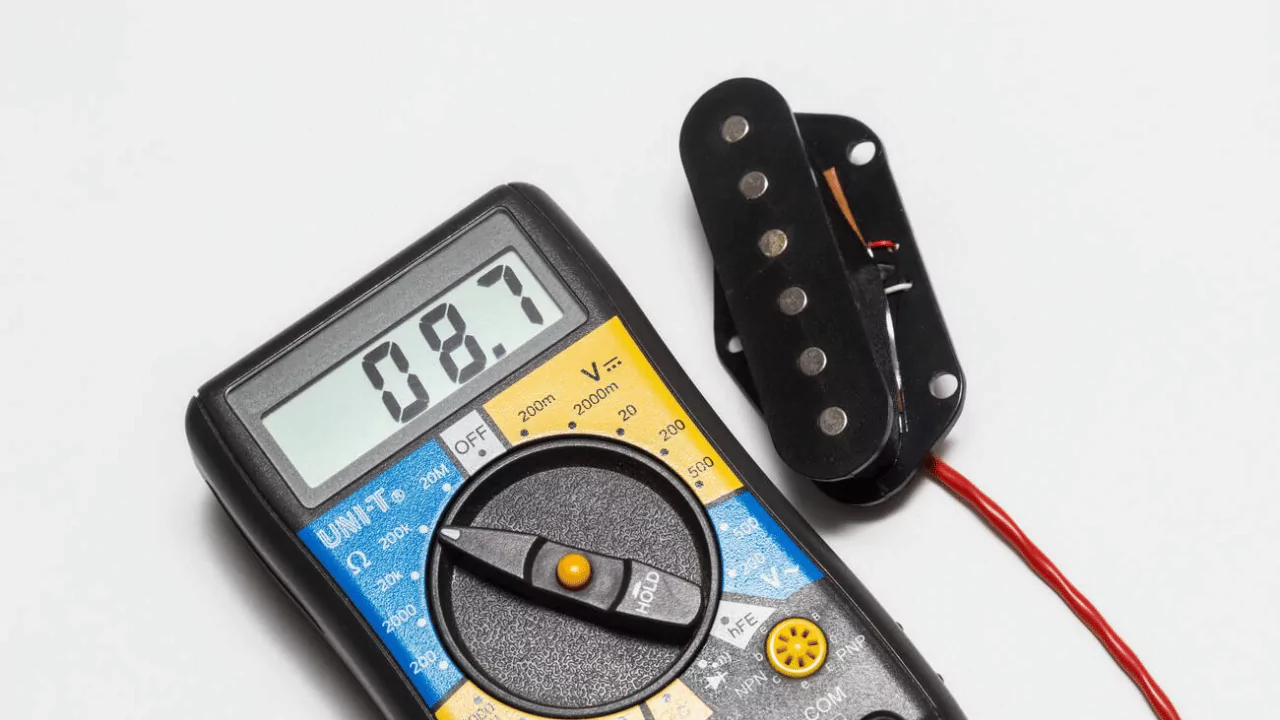To check the ohms of a subwoofer using a multimeter, follow these steps: First, ensure your multimeter is turned on and set to the appropriate setting. Then, connect the positive lead of the multimeter to the positive terminal of the subwoofer and the negative lead to the negative terminal. You should now see a reading displayed on the multimeter, indicating the impedance of the subwoofer.
In This Article:
What are Ohms and Why Do They Matter for Subwoofers?
Ohms are a unit of electrical resistance, which means how much a material or a device opposes the flow of electric current. The lower the ohms, the easier the current flows, and the higher the ohms, the harder the current flows.
Ohms matter for subwoofers because they affect the power output and the sound quality of your subwoofer. The power output of your subwoofer depends on the ohms of your subwoofer and the ohms of your amplifier. The ohms of your subwoofer and your amplifier should match, or be as close as possible, to get the best performance. If the ohms of your subwoofer are too low, your amplifier may overheat and damage your subwoofer. If the ohms of your subwoofer are too high, your amplifier may not deliver enough power and your subwoofer may sound weak.
The sound quality of your subwoofer also depends on the ohms of your subwoofer and the ohms of your other speakers. The ohms of your subwoofer and your other speakers should be compatible, or within a certain range, to get a balanced and clear sound. If the ohms of your subwoofer are too different from the ohms of your other speakers, your sound system may sound distorted or uneven.
Tools Needed to Test Subwoofer Ohms
To test your subwoofer ohms, you will need the following tools:
- A Multimeter: A multimeter is a device that can measure various electrical properties, such as voltage, current, and resistance. You can use a digital or an analog multimeter, but a digital one is easier to read and more accurate. You can buy a multimeter online or at a local hardware store.
- A 9V Battery: A 9V battery is a common type of battery that can provide a small amount of power to your subwoofer. You can use any brand of 9V battery, as long as it is not dead or leaking. You can buy a 9V battery online or at a local grocery store.
- An Audio Source: An audio source is a device that can play sound, such as a smartphone, a tablet, a laptop, or a music player. You can use any audio source, as long as it has a headphone jack or a Bluetooth connection. You will need an audio source to test the sound quality of your subwoofer after measuring the ohms.
Steps to Check Subwoofer Ohms with Multimeter
To check your subwoofer ohms with a multimeter, you need to follow these steps:
Unplug Your Subwoofer from the Power Source
Before you start testing your subwoofer ohms, you need to make sure that your subwoofer is not connected to any power source, such as a wall outlet, a surge protector, or a battery. This is to prevent any electric shock or damage to your subwoofer or your multimeter. To unplug your subwoofer, simply pull out the power cord from the back of your subwoofer or from the power source.
Remove Your Subwoofer from the Enclosure
To access the terminals of your subwoofer, you need to remove your subwoofer from the enclosure, or the box that holds your subwoofer. To remove your subwoofer, you need to unscrew the screws that secure your subwoofer to the enclosure, and then carefully lift your subwoofer out of the enclosure. Be careful not to damage the wires or the cone of your subwoofer.
Insert the Multimeter Probes into the Subwoofer Terminals
To measure the ohms of your subwoofer, you need to insert the multimeter probes into the subwoofer terminals, or the metal contacts that connect your subwoofer to the wires. To insert the multimeter probes, you need to first set your multimeter to the resistance mode, which is usually indicated by the symbol Ω. Then, you need to touch one probe to the positive terminal, which is usually marked by a red or a plus sign, and the other probe to the negative terminal, which is usually marked by a black or a minus sign. Make sure that the probes are firmly in contact with the terminals, and that there is no loose or broken wire.
Set the Multimeter to the Appropriate Resistance Range
To get an accurate reading of your subwoofer ohms, you need to set your multimeter to the appropriate resistance range, which is the maximum value of resistance that your multimeter can measure. To set the multimeter to the appropriate resistance range, you need to look at the label or the manual of your subwoofer and find out the nominal impedance of your subwoofer, which is the average ohms of your subwoofer.
The nominal impedance of your subwoofer is usually expressed in ohms, such as 4Ω, 8Ω, or 16Ω. Then, you need to select a resistance range on your multimeter that is equal to or higher than the nominal impedance of your subwoofer.
For example, if your subwoofer has a nominal impedance of 4Ω, you can select a resistance range of 10Ω, 20Ω, or 200Ω on your multimeter. If your multimeter has an auto-range function, you can skip this step, as your multimeter will automatically select the best resistance range for your subwoofer.
Evaluate the Results
To evaluate the results of your subwoofer ohms test, you need to look at the display of your multimeter and read the value of resistance that your multimeter shows. This value is the ohms of your subwoofer. The ohms of your subwoofer may vary slightly from the nominal impedance of your subwoofer, depending on the quality and the condition of your subwoofer.
A small variation of 10% or less is normal and acceptable, but a large variation of more than 10% may indicate a problem with your subwoofer, such as a loose wire, a damaged coil, or a blown speaker. If your multimeter shows a very low value, such as 0Ω or 1Ω, it means that your subwoofer has a short circuit, which is a serious issue that can damage your subwoofer and your amplifier.
If your multimeter shows a very high value, such as OL or ∞, it means that your subwoofer has an open circuit, which is also a serious issue that can prevent your subwoofer from producing any sound. If your multimeter shows any of these abnormal values, you need to check your subwoofer for any visible signs of damage and consult a professional for repair or replacement.





